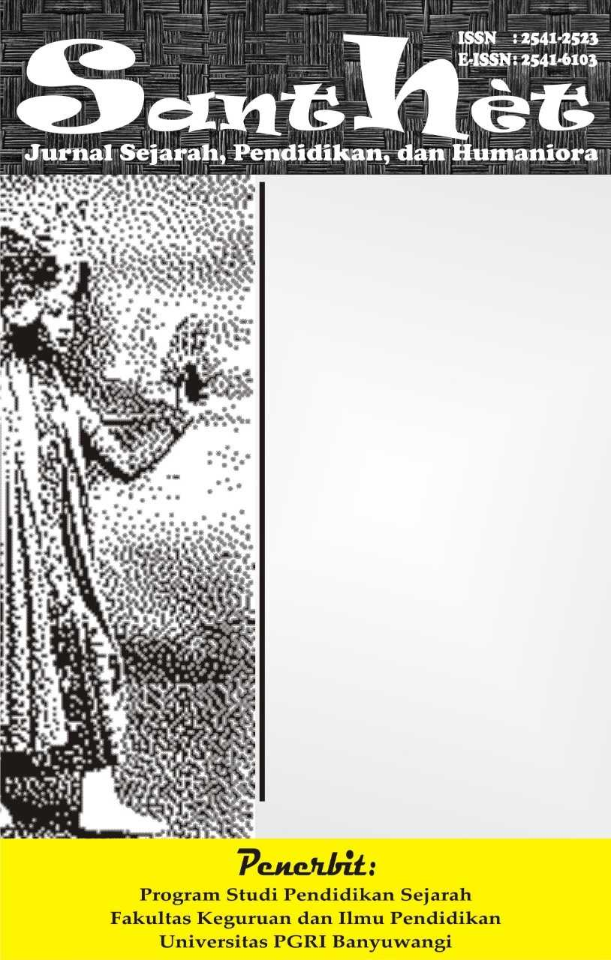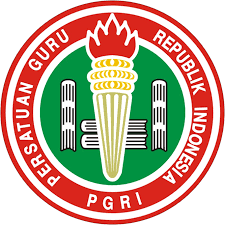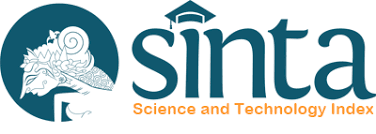THE USE OF HISTORICAL SITES IN TERNATE AS LEARNING SOURCES
Keywords:
historical site; Ternate; learning sourceAbstract
This research aimed to describe the use of historical sites in Ternate as learning sources. To achieve the mentioned aim, this research applied the qualitative method. As a field study, the data collection was done through interviews, observations, and content analysis. The data was validated by using triangulation to acquire accurate information. The learning of history in the subject of historical heritage was done by exploring the historical heritage in Ternate. The exploration was done after the discussion between the lecturer and the students. The field study was done with the project method and study tour. The process of field study covered learning orientation, historical site exploration, report writing, and students’ presentation. During exploration, the students observed, noted, and interpreted the historical heritages in the sites. The field study can promote the students to think about the chronology of any historical event. By doing this study, the students' historical awareness can also be grown.
References
Davis, Barbara Gross. (2013). Perangkat Pembelajaran (Teknik Mempersiapkan dan Melaksanakan Perkuliahan yang Efektif). Jakarta: Raja-wali Pers.
Denzim, Norman K dan Lincoln, Yvonna S. (2009). Handbook of Qualitative Research. Yogyakarta: Pustaka Pelajar
Edi Supriadi. (2013). Pemanfaatan Situs Sejarah Jamban Sari Ciamis Sebagai Sumber Belajar Sejarah Lokal (Penelitian Naturalistic Inquiry di SMP Negeri 2 Ciamis). Prodi Pendidikan Sejarah (S2), Pascasarjana UPI. (http://repository.upi.edu/2782/)
Hamid, Abd. Rahman. (2014). Pembelajaran Sejarah. Yogyakarta: Ombak.
Hasan, Said Hamid. (2019). Pendidikan Sejarah Untuk Kehidupan Abad Ke 21. Historia: Jurnal Pendidik dan Peneliti Sejarah. Vol.II, No.2. https://ejournal.upi.edu/index.php/historia/article/view/16630
Kochar, S.K. (2008). Pembelajara Sejarah: Teaching of History. Jakarta: Grasindo.
Moleong, Lexy. (2013). Metodologi Peneltian Kualitatif. Bandung: Remaja Rosda Karya.
Prastowo, Andi (2012). Panduan Kreatif Mebuat Bahan Ajar Inovatif. Yogyakarta: Diva Press.
Rowse, A.L. (2014). Apa Guna Sejarah?. Jakarta: Komunitas Bambu.
Safi, Jamin. (2015). Implementasi Nilai-Nilai Perjuangan Pangeran Nuku Dalam Pembelajaran Sejarah (Studi Kasus di SMA Negeri 2 Ternate). Tesis. Pascasarjana Prodi Pendidikan Sejarah, Universitas Sebelas Maret.
_____. (2016). Ternate dan Usaha Bina Negara Abad XVI-XIX. Istoria: Jurnal Pendidikan dan Sejarah. Vol.11, No.2.
Syaharudin, Heru Pujiwinarso, & Al idayatullah. (2019). Nilai-nilai Nasionalisme Perjuangan Hassan Basry Sebagai Sumber Belajar. Historia: Jurnal Pendidik dan Peneliti Sejarah. Volume II, No. 2. https://ejournal.upi.edu/index.php/historia/article/view/16632
Sugiyono. (2012). Metode Penelitian Kuantitatif, Kualitatif, dan R&D. Bandung: Alfabeta.
Supriatna, Nana. (2019). Pengembangan Kreativitas Imajinatif Abad Ke-21 Dalam Pembelajaran Sejarah. Historia: Jurnal Pendidik dan Peneliti Sejarah. Vol. II, No.2. https://ejournal.upi.edu/index.php/historia/article/view/16629
Supardan, Dadang. (2009). Pembelajaran Sejarah Berbasis Pendekatan Multikultural dan Perspektif Sejarah Lokal, Nasional, Global, Dalam Integrasi Bangsa (Studi Kasus Eksperimen Terhadap Siswa SMA di Kota Bandung). Univ. Pendidikan Indonesia. (URL:http://file.upi.edu/Direktori/FPIPS/JUR._PEND._SEJARAH/195704081984031-DADANG_SUPARDAN/ARTIKEL_JURNAL_INTERNASIONAL.pdf).
Warto. (2017). Menumbuhkan Kesadaran Sejarah Geerasi Muda. Makalah disampaikan dalam acara diskusi “Internalisasi Nilai-Nila Sejarah sebagai Upaya Meningkatkan Rasa Nasionalisme dan Sadar Sejarahkepada Generasi Muda. http://pendidikan-sejarah.fis.uny.ac.id/sites/pendidikan-sejarah.fis.uny.ac.id/files/KESADARAN%20SEJARAH%20GENERASI%20%20MUDA.pdf
Wasino. (2007). Dari Riset Hingga Tulisan Sejarah. Semarang: UNNES Press.
Winerburg, Sam. (2006). Berpikir Historis. Jakarta: Yayasan Obor Indonesia.





























